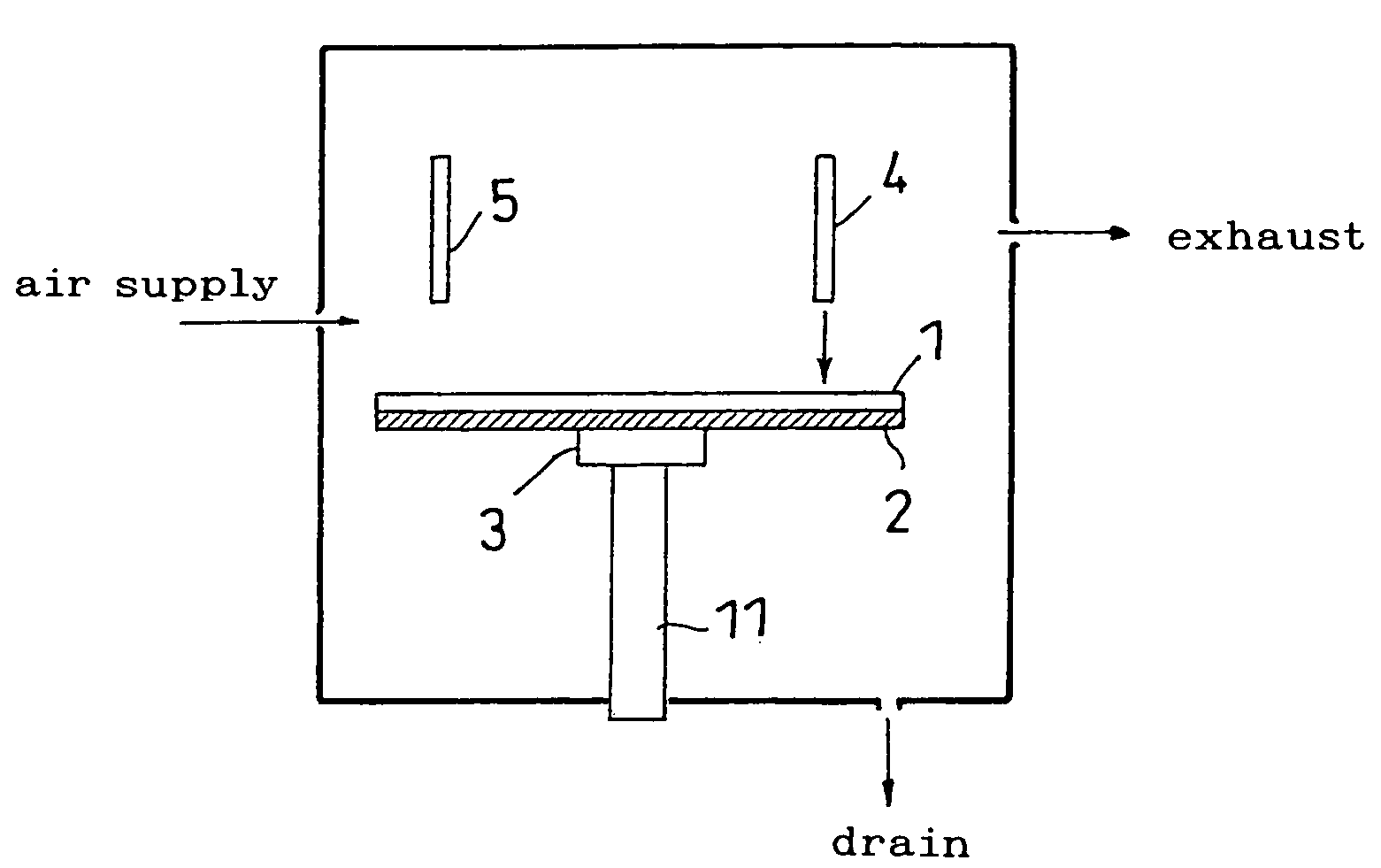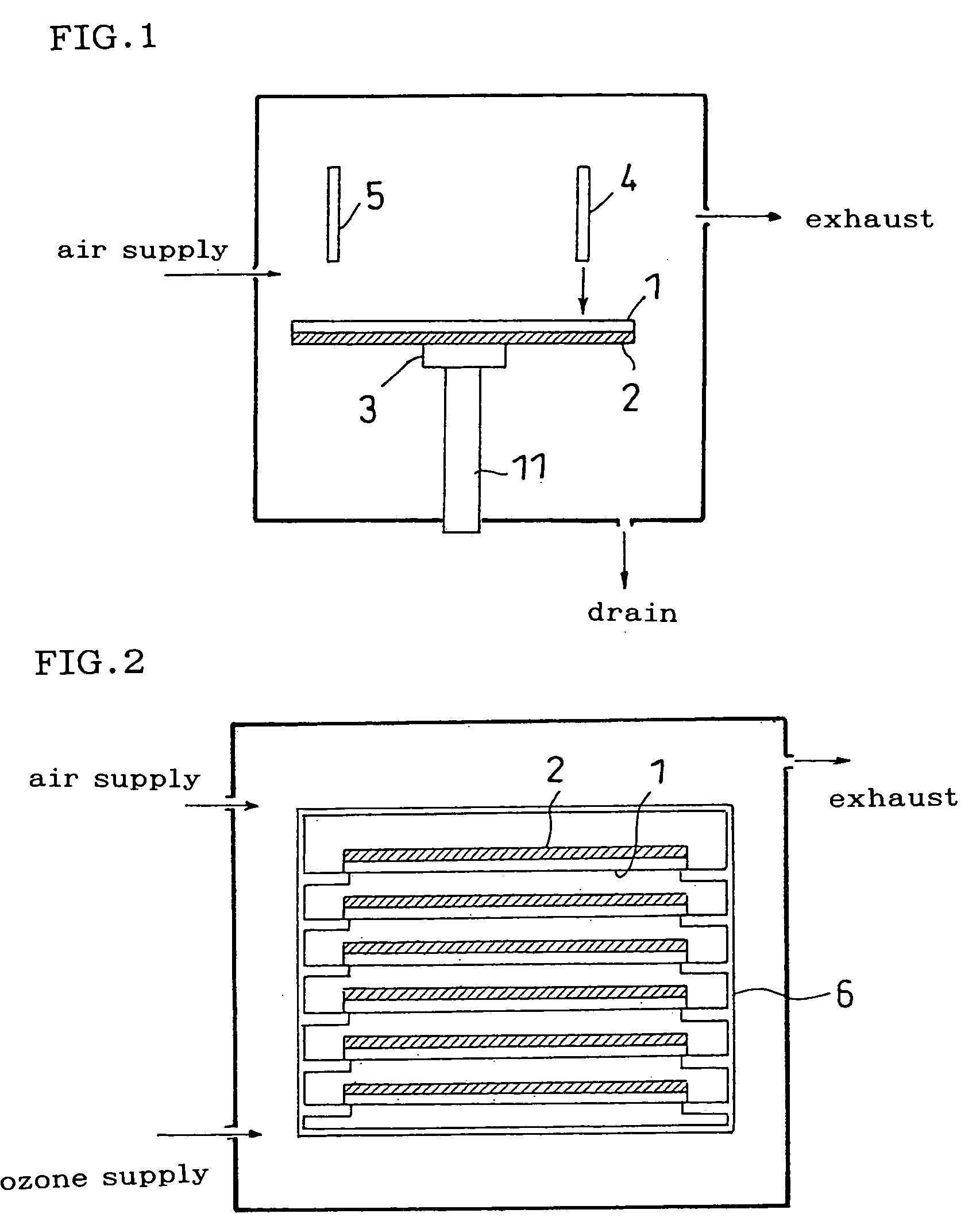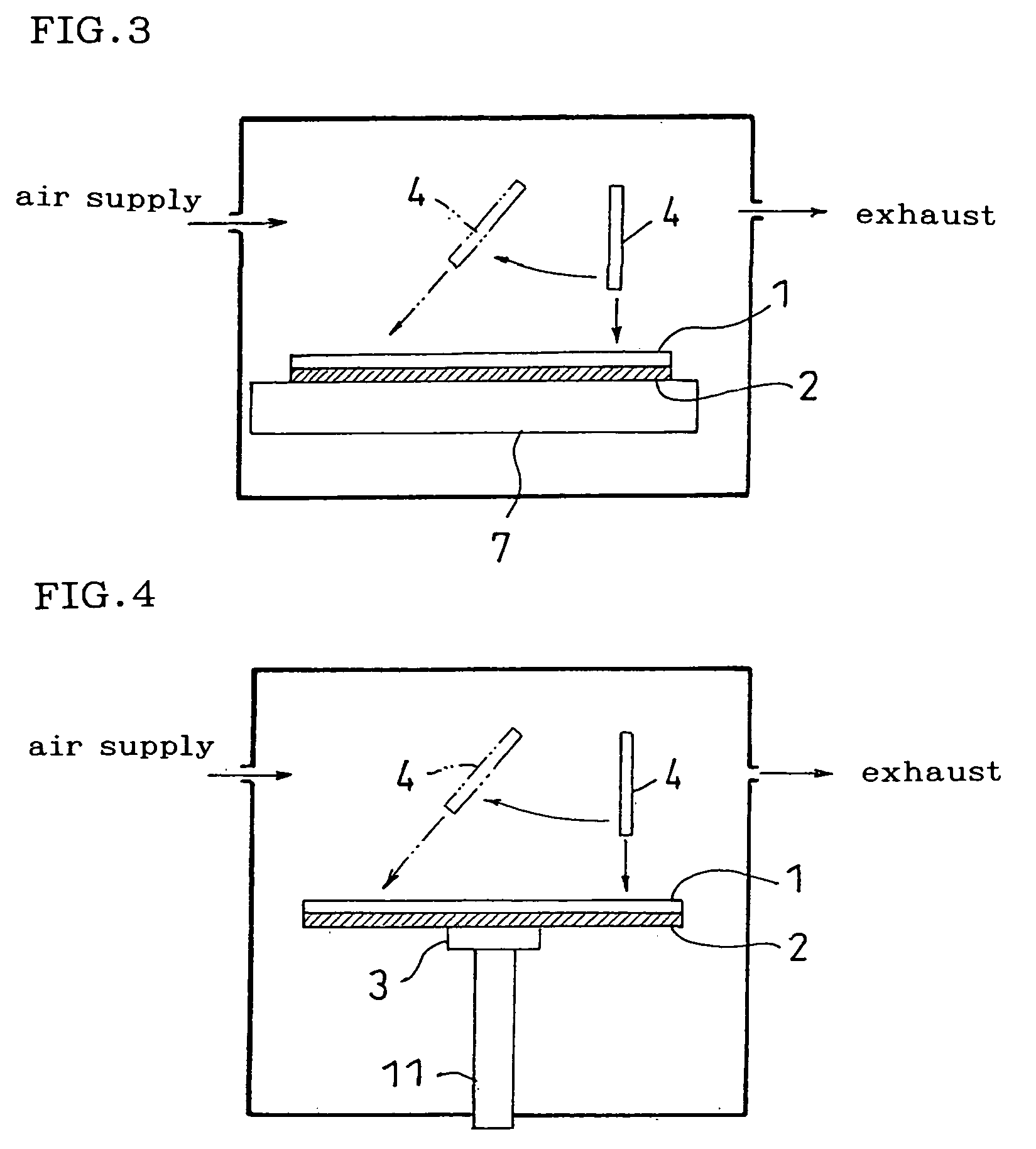Wafer back surface treating method and dicing sheet adhering apparatus
a back surface treatment and adhesion technology, applied in the direction of electrical equipment, semiconductor/solid-state device manufacturing, basic electric elements, etc., can solve the problems of severe contamination of dicing sheet and disabled pick-up
- Summary
- Abstract
- Description
- Claims
- Application Information
AI Technical Summary
Benefits of technology
Problems solved by technology
Method used
Image
Examples
example 1
[0050]FIG. 1 is an example of a wafer back surface cleaning section of a grinding or polishing apparatus related to the invention. In FIG. 1, a wafer 1, in a state where a back grinding tape 2 remains stuck thereon, is fixed on a rotary shaft 11 by vacuum suction with a suction pad 3 interposed therebetween and cleaned with a cleaning water spraying nozzle 5 while being rotated about the rotary shaft 11, and thereafter, removal of water and a deactivation treatment by ozone are simultaneously performed with an ozone blowing nozzle 4. Ozone is produced by an ozone generator provided separately. An ozone concentration is preferably in the range of from 0.1 through 10 ppm in consideration of a time necessary for reduction in ozone concentration when the apparatus is opened. Exhaust is effected by a common exhaust means such as a blower or the like. The wafer is unloaded through a wafer take-out port by a robot arm having a wafer sucking means after an ozone concentration is reduced to ...
example 2
[0051]FIG. 2 is an example of a treatment by ozone of a wafer cassette related to the invention. In FIG. 2, wafers 1 are housed in a wafer cassette 6, each being in a state where the back grinding tape 2 remains stuck thereon. The wafer cassette 6 is placed in a vessel having an ozone supply section and an exhaust section. Wafers 1 are subjected to a deactivation treatment in the condition similar in Example 1. The cassette is taken out from the closed vessel, opening the top portion thereof after an ozone concentration is reduced through 0.1 ppm or less while air is supplied through an air supply port.
example 3
[0052]FIG. 3 is an example of a treatment by ozone of wafers, sheet-fed, related to the invention. In FIG. 3, a wafer 1, in a state where a back grinding tape 2 is not stuck thereon, is fixed to a chuck table 7. An ozone blowing nozzle 4 is mounted to a movable shaft so that a blowing direction is able to be directed to any position on the wafer 1 and ozone can be blown to across all of the surface by proper movement thereof. A treatment condition and take-out method are similar to those in Example 1.
PUM
 Login to View More
Login to View More Abstract
Description
Claims
Application Information
 Login to View More
Login to View More - R&D
- Intellectual Property
- Life Sciences
- Materials
- Tech Scout
- Unparalleled Data Quality
- Higher Quality Content
- 60% Fewer Hallucinations
Browse by: Latest US Patents, China's latest patents, Technical Efficacy Thesaurus, Application Domain, Technology Topic, Popular Technical Reports.
© 2025 PatSnap. All rights reserved.Legal|Privacy policy|Modern Slavery Act Transparency Statement|Sitemap|About US| Contact US: help@patsnap.com



